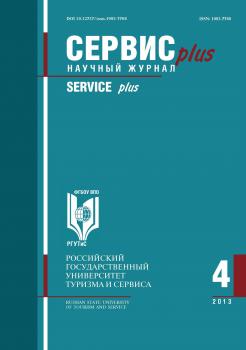Sightseeing, or cognitive, tourism includes visits to historical, cultural and natural attractions. Historical basis for designing the tourist-excursion programs is topical nowadays. One of the interesting regions is the Iberian Peninsula with the Roman monuments that have survived to the present day. The article reveals the origins of the foundation and formation of territorial entities. The beginning of these formations belongs to the reign of Gaius Julius Caesar Octavian. The article is about the rise to power of Octavian, the conquests of the Roman army, fight of North of the Iberian Peninsula peoples for independence, the development of new colonies and cities, administrative reorganization of the territory of Spain, the formation of Conventions. The author shows the real changes in the Northern areas of the Peninsula. They gave the territory, which natives originally occupied, to military units for building bases and the business environment; traffic and communications developed. There was a need in the minting and use of coins as a measure of exchange. This led to political, administrative, social and economic changes in the community. The author demonstrates the different forms of government, organizing cultural and social events. This article contains historical and regional character, devoted to the development of civilization in the Iberian Peninsula, architectural monuments of the Romanera. The article can be interesting for students, teachers of secondary and higher educational institutions, as well as a wide range of persons interested in culture, history and tourism of Spain.
tourist program design, Roman legacy, history of the formation of territorial units, colonies, convents, monuments
Туризм сегодня является одной из важнейших отраслей экономики. Качественные комплексные услуги: гостиничный сервис, услуги транспорта, лечебно-оздоровительные, спортивные, экскурсионные привлекают большое количество туристов. Экскурсионный, или познавательный, туризм предполагает посещение исторических, культурных и природных достопримечательностей. Современные туристы интересуются историческими процессами посещаемой страны [2]. Одним из интересных регионов является Пиренейский полуостров с архитектурными памятниками римской эпохи, которые сохранились до наших дней. Истоки зарождения и формирования территориальных образований относятся к периоду правления Гая Юлия Цезаря Октавиана.
1. Loseva E.S., Mishina N.V., Gozalova M.R. Formirovanie turisticheskogo imedzha regiona. Sovremennoe issledovanie sotsial´nykh problem. 2015. № 3(47). S. 315. [Elektronnyy resurs]: DOI:https://doi.org/10.12731/2218-7405-2015-3-27 (data obrashcheniya: 02.08.2015).
2. Spatar´-Kozachenko T.I. Rol´ inostrannykh yazykov v formirovanii krosskul´turnogo i servisnogo prostranstva (na primere yazykov, rasprostranennykh na territorii sovremennoy Ispanii). 2015. T. 9. № 2 (58).[Elektronnyy resurs]: DOI:https://doi.org/10.12737/11901(data obrashcheniya: 18.08.2015).
3. Carmen Fernández Ochoa, Roma y la Conquista del Norte Peninsular: Historia de Asturias - La Nueva España. Los Cántabros antes de Roma, 2ª edición: Dr. Eduardo Peralta Labrador, Real Academia de la Historia, Madrid, 2003,42 r.
4. Dion Casio (2004). Historia Romana, obra completa edición, Editorial Gredos, Madrid. Libros I-XXXV (Fragmentos). Editorial Gredos, Madrid,2004. Libros XXXVI-XLV. Editorial Gredos, Madrid,2004. 5) Historia Natural de Cayo Plinio 1976. Francisco Hernández (IV, VI, VII 1624Libros I-XXV. Libros XXVI-XXXVII Jerónimo de la Huerta. Museo Arqueológico de Nápoles. Ed. Dios Griego Herido,1999.
5. Lucius Anneus Florus, Tome I: Tableau de l’Histoire du peuple romain, de Romulus à Auguste. Livre I. Texte établi et traduit par P. Jal. CLXXI, Book, 1967.
6. Suetonio Tranquilo, Cayo, (aut.), Agudo Cubas, Rosa María, (tr.), La vida de Augusto, Editorial Gredos,1ªed., 1ª imp., Madrid, 2010, r. 160.

















